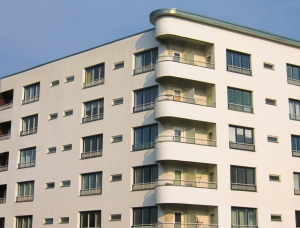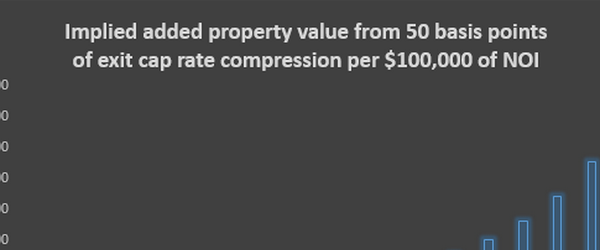Buy-to-let property investing refers to the strategy of buying property with the purpose of renting it.
Rapidly rising housing prices in the early 2000s and up to 2007, have boosted demand for this type of investing, as a means of realizing significant capital gains. With price growth slowing, and even turning negative, in some major housing markets such as UK and the US due to the recent global financial and economic crisis, it is important for property investors aiming at maximizing returns and minimizing risk, to understand the dangers of purchasing a property in order to rent it.
Risk of Overestimating Appreciation
The buy to let investor has two sources of return. The rental income that can be earned by renting the property and the appreciation return, that is the increase in the value of the property, or capital growth as it is often referred to. Thus, one of the risks that buy to let investors have to face when evaluating the profitability of a potential investment, is the risk of overestimating the appreciation potential of the property.
According the Halifax constant quality housing price index, average housing prices climbed 40% over the last four years in UK. Longer-term data, and specifically since 1930, indicate that UK housing prices increased at an average annual rate below 7%. It is important that buy to let investors have in mind these figures so they have an understanding of what happened historically, but they should in no way take for granted that the future will be like the past.
Within this context buy to let investors should be realistic in terms of their expectations of long-term price increases. Such expectations should be based on views and predictions of market experts that have a very good understanding of the medium-term dynamics of property demand, supply and prices in the local market.
Risk of Declining Rent
The rent level that a property commands through time may decrease after the property is purchased because of declining demand or supply growing faster than demand. Declining demand in the local housing market may be triggered by an economic downturn and declining income, which may motivate individuals that would otherwise leave parental homes or other joint living arrangements to rent their own unit to postpone such decisions. Declining rents may also be triggered by oversupply of rental units in the local market due to excessive construction of new units. For this reason any rent assessments provided by the sellers of buy to let units should be viewed with caution and checked as to how realistic they are.
Risk of Negative Leverage
Positive leverage or gearing refer to the use of borrowed money to increase investment returns. Borrowing works in favor of property investors when the return of the property (sum of income return and appreciation return) without borrowing is greater than the mortgage constant. When property prices are falling borrowing would reduce the total return of the investment and could reduce it below the mortgage constant. At that point borrowing actually has a negative effect as it results in an investment return that is lower than the one that would be achieved if borrowing was not used. Given that income returns usually, range from 4-10% depending on property type the combination of borrowing with value declines of over 6% would most likely result in negative returns. The bottom line is that buy to let investors who are counting both on return from rental income and value appreciation should be careful in terms of the extent of the borrowing that will use to acquire a property. One very important risk mitigating strategy is to avoid borrowing an amount that will require a mortgage payment that is greater than 75-80% of the rental income of the property. In fact, most buy to let mortgage lenders set the maximum loan amount so that the rental income is 120%-125% of the mortgage payment.
Risk of Poor Property Selection
Poor property selection can exaggerate the risks of buy to let investments. Poor property selection may due to investing in an unpopular and out-of-demand type of residential property. For example, local demand needs may be focused primarily on one and two-bedroom apartments, with studios and large apartments being out of favor. Under such market circumstances, investing in a studio could represent a poor property selection. Poor property selection may also have to do with location. For example, some residential areas may command very weak demand, thus presenting high risk of finding a tenant. Finally, poor property selection may have to do with the property’s condition which may result in high maintenance and operating costs, thereby reducing the income return to the investor.
Risk of Bad Tenants
Finding and screening new tenants can be one of the most critical and difficult tasks in managing rental property. Bad tenants may harm the investment in several ways ranging from damages to the property, driving other tenants out of the property, to delaying or not making rent payments. For this reason it is preferable that the investor assigns the task of finding and screening tenants to professional property letting and management firms for a fee. In case that the landlord undertakes this task, bank and employment references need to be reviewed and evaluated before accepting a tenant. Personal references, especially from previous landlords can also help make a better tenant selection.
Financing Buy to Let Purchases
Real estate investors can finance buy to let property purchases through mortgages that are based on the potential or actual rental income of the property. Most lenders will determine the maximum amount to lend so that the annual rental income will be 125% higher than the interest or total loan payment. Furthermore, there will be a maximum loan-to-value ratio, which in today’s tight credit environment is in most cases 75%. For example, let’s assume that the investor is considering purchasing an apartment valued at £100,000, with a projected monthly gross rental income of £500. Let’s also assume that the investor finds a lender who is willing to provide a fixed-rate loan at a rate of 7.0% and he is satisfied that the property’s gross rental income is 125% of interest payments. Based on these numbers we can calculate the maximum loan amount L(rent) that the investor can borrow based on the income earning capacity of the property as follows:
L(rent) = [ (500 X 12)/1.25 ]/0.07 = £68,571
However, as indicated earlier, the maximum loan amount is also restricted that it has to be at maximum 75% of property value, that is, £75,000 in this example. The lender will lend the lower of the two, that is, £68,571. Notice that if the maximum loan amount based on rental coverage was £80,000, then the lender would lend to the investor only £75,000. When market conditions are good and credit availability is greater with more lenders competing for loans the rent coverage ratio may go as low as 100% and LTV ratios as high as 85%-90%.
High Return Investment Strategies
Based on the high-return property investing strategies buy to let investors that want to achieve the highest possible returns should focus on four types of buy-to-let properties:
1)Rental property that are sold at a significant discount
2)Rental properties in under-supplied markets where rents are growing and are very likely to continue to grow
3)Mismanaged properties that are rented at rents significantly lower than their true potential given their location
4)Rental properties that are bound to benefit from large infrastructure and development projects, which will make them more attractive to renters and increase their income-earning capacity
In purchasing rental property that is sold at a significant discount the investor needs to validate via a reliable valuation that the asking price for the property is indeed below its true market value. Caution is needed when such properties are bought in a a falling market. The investor needs to assess the discount provided against likely market value declines after the property is purchased. Such declines may erode any profits that the investor would enjoy from the discount.
In looking for buy-to-let property with high likelihood of strong rental increases the investor needs to focus on cities where market outlook and demand-supply conditions would favour such developments. Investors have better chance of identifying such markets by buying market rent forecasts from specialized and competent forecasting firms.





























Comments